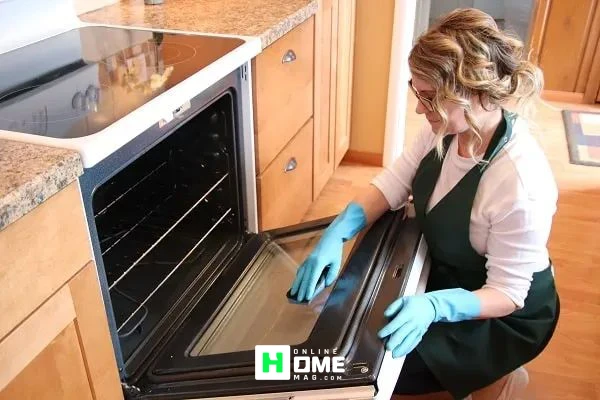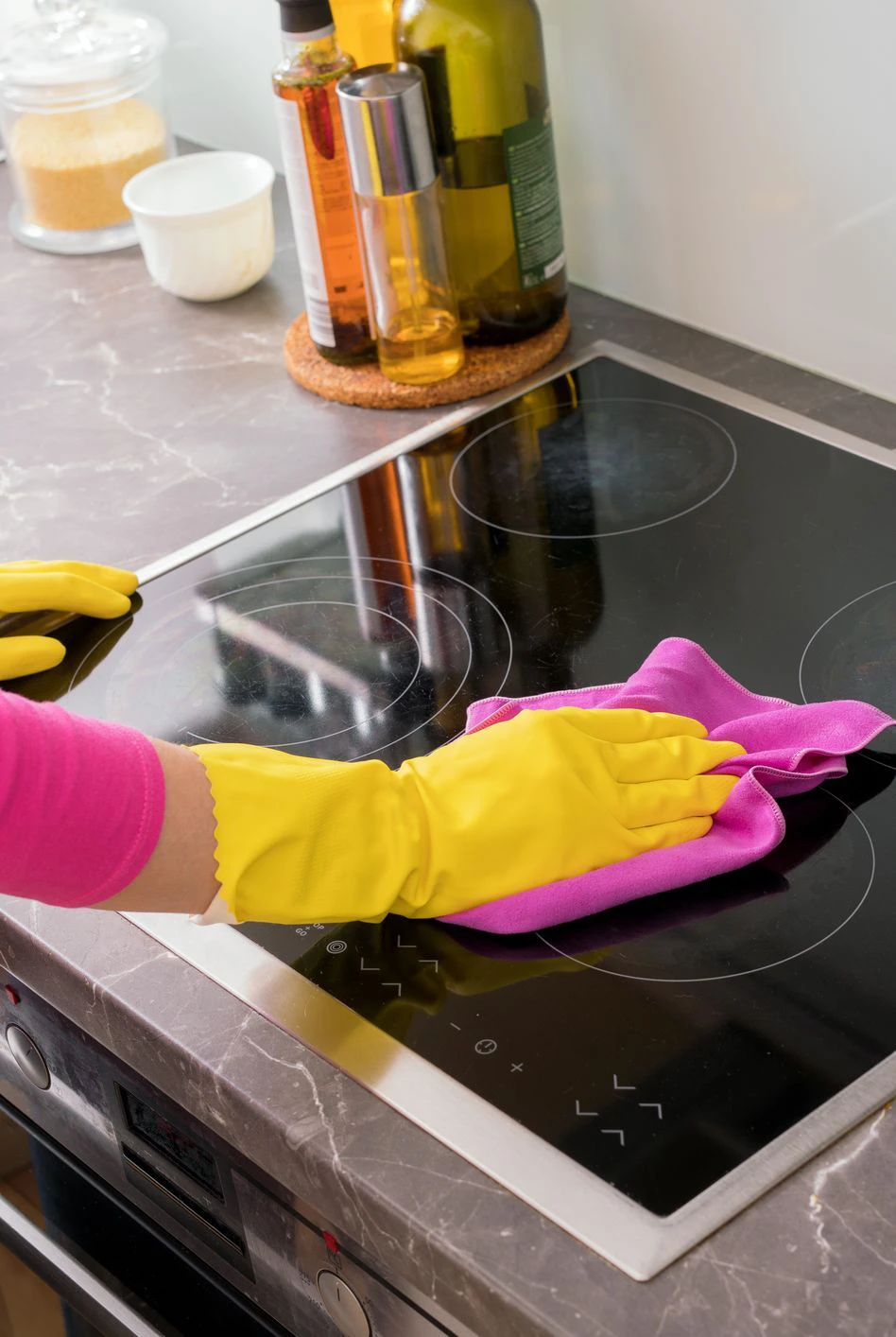🕓 Last updated: July 16, 2025
Let the Stovetop Cool Completely
If you want to clean a glass stovetop safely and effectively, the very first rule is patience. Never attempt to clean while the surface is still warm—even if stains are visible and tempting to tackle. A hot glass surface not only increases the risk of burns, but it can also cause cleaning products to evaporate too quickly or even burn into the residue, making it tougher to remove later. Let the stovetop cool fully to avoid damaging the glass and to give yourself the best chance of lifting grease and buildup without effort—or scratches.
Remove Loose Debris with a Dry Cloth
Use a soft microfiber cloth to sweep away crumbs, dust, or hardened food bits. Don’t apply pressure—just remove what’s sitting on the surface to prevent further scratching.

Apply a Vinegar Mist to Break Down Grease
White vinegar is a safe, natural degreaser that won’t damage the glass. Spray a light mist across the surface and let it sit for 2–3 minutes. Then wipe clean using a damp microfiber cloth.
Tackle Stubborn Spots with Baking Soda and Heat
For tough stains or burnt-on residue:
- Sprinkle baking soda over the affected areas.
- Lay a towel soaked in hot water over the area for 15 minutes.
- Lift the towel and gently wipe away the loosened grime.
- This method softens residue without scrubbing or abrasion.
Use a Plastic Scraper (Only When Needed)
For extremely stubborn spots, use a plastic razor scraper designed for glass surfaces. Hold it at a 30- to 45-degree angle and gently push residue off the glass. Never use metal blades—they scratch permanently.
Rinse and Dry with Care
After cleaning, wipe the surface with a clean cloth dampened in warm water to remove any product residue. Immediately dry with a fresh microfiber towel to prevent water spots or streaking.
What to Avoid
To protect your glass stovetop long-term, stay away from:
- Steel wool or scouring pads
- Abrasive powders or harsh chemicals (e.g., ammonia, bleach)
- Scrubbing with too much pressure
- Cleaning while the surface is still hot
Keep It Clean With Daily Maintenance
Prevention is better than deep cleaning. After each use (once cooled):
- Wipe with a damp microfiber cloth
- Spray vinegar if needed to dissolve grease
- Dry immediately to prevent buildup
- These small habits reduce the need for intensive scrubbing and keep your stovetop looking new.
A glass stovetop is a sleek focal point in any kitchen—but it requires the right cleaning techniques. By using gentle materials, non-abrasive solutions, and preventative care, you can maintain a spotless, scratch-free surface for years. Avoid shortcuts, use the right tools, and clean regularly—because damage is hard to reverse, but easy to prevent.
If you’d like, I can now provide a printable checklist, visual infographic, or product recommendations that complement this guide.


